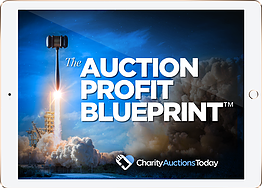DOWNLOAD The Auction Profit Blueprint
The 4 tools BIG organizations use every time to skyrocket auction profits!
The Step-By-Step Guide to stop leaving thousands on the table.
Explore peer-to-peer fundraising to see if it’s right for you. CharityAuctionsToday can help you make your P2P fundraiser a success.

Peer-to-peer fundraising is a powerful tool. It leverages the networks of supporters to raise money for causes they care about.
But what exactly is peer-to-peer fundraising?
In simple terms, it’s a method where individuals raise funds on behalf of an organization. They reach out to their personal networks, asking for donations.
This guide will provide a comprehensive overview of peer-to-peer fundraising. It will explain how it works, and how to implement a successful campaign.
Whether you’re a non-profit organization, a charity event organizer, or an individual looking to raise funds, this guide is for you.
Let’s dive into the world of peer-to-peer fundraising and explore its potential for your cause.
Peer-to-peer fundraising, often abbreviated as P2P fundraising, is a dynamic approach to raising funds. It involves supporters raising money on behalf of a cause by tapping into their personal circles. Unlike traditional fundraising methods, peer-to-peer fundraising relies heavily on personal connections and trust.
This strategy allows organizations to exponentially increase their reach. Every participant in a peer-to-peer campaign becomes a mini-fundraiser, expanding the campaign’s visibility. Supporters usually set up personalized fundraising pages and share them through emails and social media platforms.
Peer-to-peer fundraising also fosters deeper engagement. Fundraisers get personally involved in the cause, often leading to more passionate support. This approach not only raises funds but also builds a community around the mission.
In summary, peer-to-peer fundraising harnesses the power of personal networks and digital tools to create widespread impact. This makes it a preferred choice for many organizations aiming to broaden their donor base and increase donations.
Peer-to-peer fundraising comes with several advantages. One key benefit is its ability to expand an organization’s reach. By empowering supporters to share campaigns with their networks, nonprofits can connect with new donors who may not otherwise be reached.
Another benefit is the increased level of engagement. Participants in peer-to-peer campaigns often feel a personal connection to the mission. This personal tie can lead to a deeper commitment and more proactive fundraising efforts.
Additionally, peer-to-peer fundraising is cost-effective. Since supporters do much of the promotion themselves, organizations spend less on advertising. Instead, they benefit from the power of word-of-mouth marketing, which is both credible and influential.
Lastly, campaigns that leverage social platforms can go viral. A compelling message shared across networks can gain rapid momentum. This potential for viral sharing can significantly amplify the campaign’s impact, leading to more donations and greater awareness.
Peer-to-peer fundraising leverages individual networks for collective impact. Supporters act as mini-campaign managers. They reach out to personal connections for donations, expanding the campaign’s reach.
These efforts start with a central campaign created by an organization. Supporters receive resources to guide their fundraising journey. Personal stories and experiences fuel their appeal. The more relatable the story, the more compelling the ask.
Social media plays a crucial role. Platforms like Facebook and Instagram host these appeals, merging personal storytelling with fundraising. This blend helps reach friends, family, and even strangers with a genuine connection to the cause.
Technology simplifies participation. Donations are processed online through secure links shared by supporters. These tools track progress, allowing supporters and donors to see cumulative impacts. This transparency builds trust, encourages participation, and enhances donor engagement, ultimately leading to successful fundraising outcomes.

by Major Tom Agency, Unsplash
Successful campaigns start with strong planning. A clear roadmap is essential. Begin by defining the campaign’s scope and objectives.
Consider drafting a timeline outlining each phase. This should include pre-launch activities, the main fundraising period, and follow-up steps. A well-thought-out plan keeps everyone aligned.
Here’s a basic planning checklist:
By following these guidelines, your campaign will be well-prepared to achieve its objectives and drive meaningful engagement.
A successful campaign hinges on clear goals. Define what you hope to achieve, such as the total amount to raise or the number of new donors.
Realistic and measurable objectives help guide efforts and keep everyone motivated. They also serve as benchmarks for evaluating progress.
Remember that well-defined goals provide direction and foster accountability among participants, leading to a more focused and unified fundraising effort.
P2P platform choice is crucial for campaign success. A user-friendly interface boosts participation and simplifies donations.
Look for features like easy sharing options and robust analytics. These help track progress and optimize strategies in real-time.
Consider platforms known for secure transactions. This assures donors that their contributions are well-protected, building trust and enhancing overall campaign credibility.
Recruiting passionate fundraisers is key. Focus on engaging individuals who believe deeply in your cause. Communicate the campaign’s impact clearly to spark interest.
Provide ongoing support and resources. This includes training materials and tips on effective outreach. Participants feel more equipped and confident when well-supported.
Consider these strategies to motivate fundraisers:
With a strong support system, fundraisers are more likely to stay committed and achieve campaign goals.
Engaging participants is crucial for maintaining momentum in any peer-to-peer fundraising campaign. Start by personalizing communications to make each supporter feel valued.
Use regular updates to inform participants about campaign progress. Highlight achievements and share motivating stories. This fosters a sense of community and collective purpose.
Donors respond well to gratitude. Ensure timely thank-you messages and recognize donations publicly when possible. Appreciation builds rapport, encouraging repeat support and lasting loyalty.
Stories capture attention and stir emotions. Share narratives that highlight the impact of donations.
Use real-life examples of those helped by the campaign. Personal stories can inspire action and drive donations.
Tailor stories to the audience, ensuring they are relatable and heartfelt. Compelling stories transform potential donors into passionate supporters.
Social media can amplify your campaign’s reach. Encourage participants to share campaign updates and personal stories.
Leverage video and images to create engaging content. Visual media can significantly boost engagement rates.
Utilize technology to track and analyze engagement. Use insights to refine strategies and maximize outreach efforts effectively.
Recognition can motivate participants. Highlight top fundraisers in newsletters and social media posts.
Offer incentives such as awards for exceptional efforts. Small gestures of appreciation can encourage continued participation.
Create a leaderboard to showcase fundraising achievements. Friendly competition can boost enthusiasm and inspire greater effort among participants.
Measuring success in peer-to-peer fundraising involves tracking both financial and engagement metrics. Analyze data to identify trends and growth areas. This will guide future decisions and improve strategies.
Maintain engagement by keeping participants informed and involved. Use regular updates to sustain interest in the ongoing impact of their contributions. This fosters a strong connection with your cause.
Consider the following to maintain engagement:
These efforts help to maintain enthusiasm and encourage ongoing participation in future campaigns.
After the campaign, a thorough analysis helps identify successes and learn from any challenges. Examine the effectiveness of different strategies and channels used. Recognize trends that contributed to achieving goals.
Retaining donors is key to long-term success. Develop personalized follow-up messages to demonstrate appreciation and impact. Consistent communication builds stronger relationships.
Use the insights gained for improving future outreach efforts. A solid analysis lays the groundwork for better engagement and donor retention in future initiatives.
Preparation for future campaigns starts with reviewing past performance and identifying improvements. Understand what worked well and adapt strategies accordingly.
A clear timeline and solid plan are essential. They ensure resources are allocated efficiently. Learn from previous experiences to refine objectives and expand outreach efforts.
Foster relationships built in past campaigns. This strengthens the foundation for future peer-to-peer fundraising success. Consistent engagement increases the likelihood of continued participation from loyal supporters.
Peer-to-peer fundraising empowers nonprofits to expand their reach. By leveraging personal networks, organizations can drive significant impact. This approach not only enhances fundraising efforts but also strengthens community ties.
Continuous improvement and engagement are key to long-term success. Always adapt strategies for better outcomes. Cultivate lasting relationships with supporters to ensure future success.
DOWNLOAD The Auction Profit Blueprint
The 4 tools BIG organizations use every time to skyrocket auction profits!
The Step-By-Step Guide to stop leaving thousands on the table.

